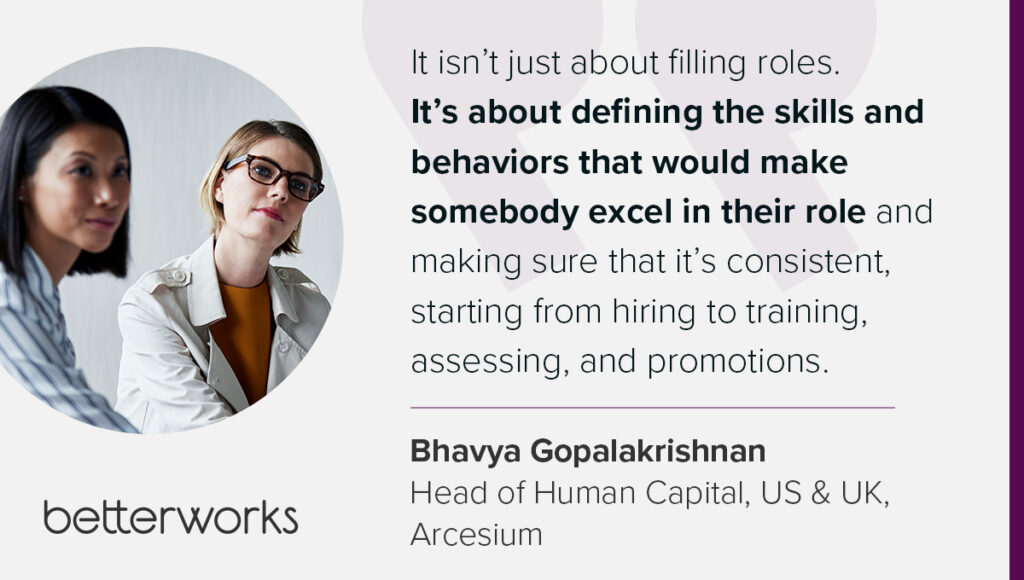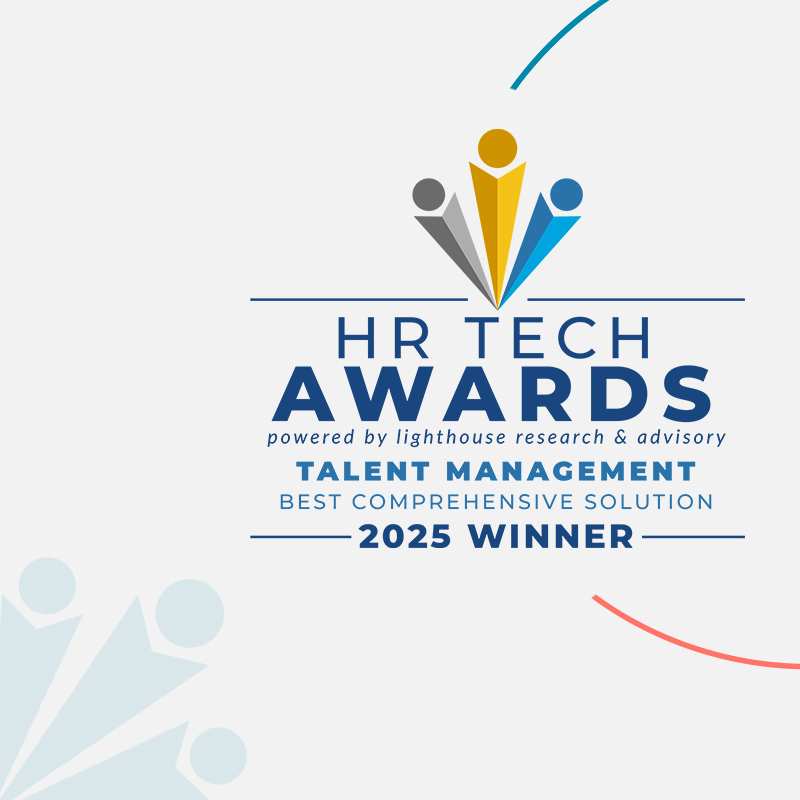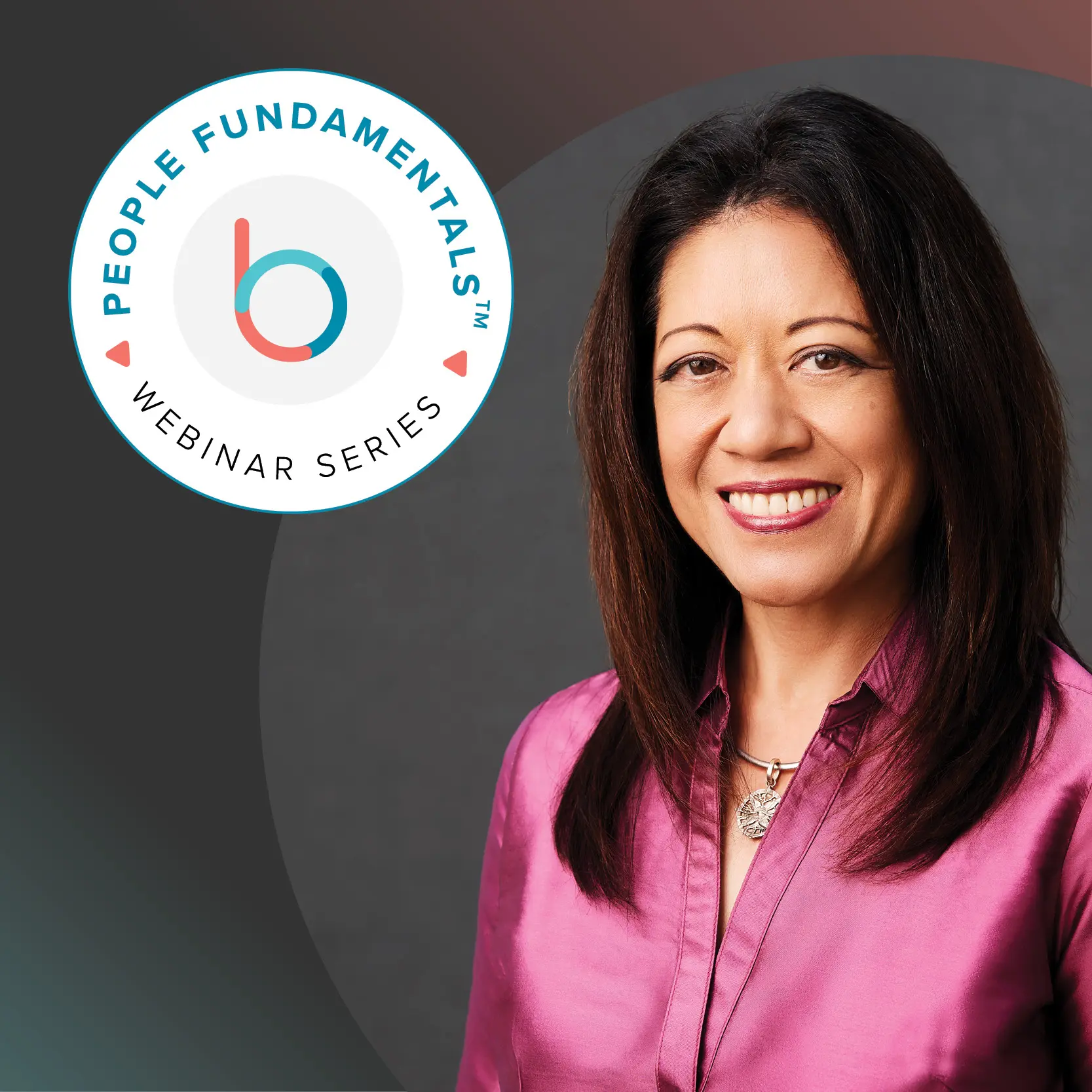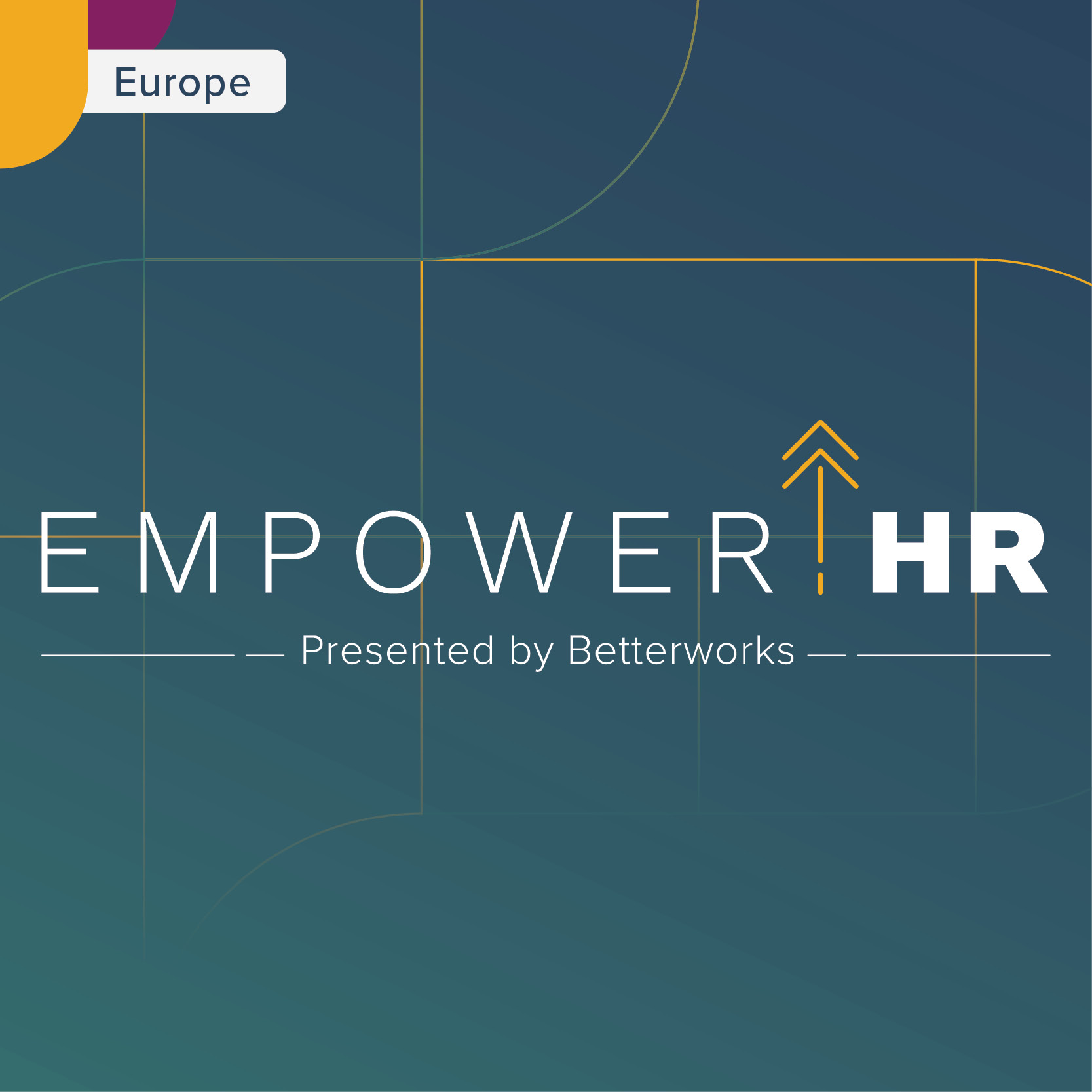Performance reviews weren’t designed for the pace of modern work. When goals go stale, check-ins feel disconnected, and development becomes reactive, organizations risk losing both alignment and engagement. But HR leaders today have the opportunity—and the tools—to rewrite the playbook.
That’s exactly what Bhavya Gopalakrishnan, head of human capital at Arcesium, set out to do. Faced with outdated systems and static goal cycles, Bhavya led a transformation to modernize performance management across the 2,000-person organization.
At EmpowerHR 2025, she shared how her team implemented agile goal setting, competency-based frameworks, and AI-powered tools to build a culture of continuous performance and development.
She was joined by Cheryl Johnson, chief product and technology officer at Betterworks, who added perspective on how Betterworks supports large-scale change for enterprise HR teams.
Make goal management agile—and keep it connected
Before Arcesium’s transformation, static goals were stalling progress. Employees were working hard, but their priorities weren’t always aligned with the pace of the business.
“Our goal management was a bit static; I would even call it one-dimensional,” she explained. Bhavya explained. The existing model made it difficult to hold people accountable or ensure clarity on evolving business needs.
To create more flexibility and alignment, Arcesium shifted to a quarterly OKR model using Betterworks. “Employees are encouraged to set their own OKRs,” Bhavya said. “This isn’t just about making them feel like they own their work, but about connecting what they do to company objectives and company success.”
The change helped teams stay nimble and responsive to evolving priorities—without losing visibility or focus. “It’s created a culture of openness,” Bhavya said, “where employees can view and understand how their goals align with one another’s.”
Build a performance framework grounded in skills and behavior
With more agile goals in place, Arcesium turned its attention to another foundational shift: defining performance through skills and behaviors, not just job titles.
“It isn’t just about filling roles,” Bhavya said. “It’s about defining the skills and behaviors that would make somebody excel in their role and making sure that it’s consistent, starting from hiring to training, assessing, and promotions.”

This competency-based approach gave employees a clearer understanding of what success looked like – and helped managers coach and develop their teams more effectively.
But as the company scaled, Bhavya ran into a common enterprise challenge: visibility. “A couple of months ago, a business team reached out to us with a challenge,” Bhavya said. “They wanted better visibility into employees’ past experiences and skill sets, really to support staffing decisions, but today, we’re a 2000-plus organization, and we don’t have a good sense of the talent landscape.”
That’s where Betterworks’ AI-powered performance management tools come in. “Most organizations don’t actually know what skills their workforce has, at least not in real-time,” Cheryl said. “Instead, they rely on self-reported skills or incomplete data spread across multiple systems. … With AI-powered skills intelligence, we can provide real-time visibility into the skills your workforce actually has, so you can make smarter talent decisions faster.”
The impact of a skills-based approach goes beyond development planning. When skills are tied to performance goals and feedback, organizations can reduce bias, improve succession planning, and align people strategies with real business needs.

Take a smarter, more human approach to performance
Arcesium’s journey wasn’t just about replacing outdated systems. It was about changing how employees and managers experience performance altogether—from a rigid, reactive process to one that’s continuous, clear, and empowering.
It meant asking big, strategic questions, Bhavya recalls: “How can we create a philosophy that shifts the mindset for employees to think about performance management and goal management as tools that help them thrive every day at work, rather than, ‘HR needs to do this at the end of the quarter’?”
With quarterly goals, competency frameworks, and data-backed visibility into skills, Bhavya and her team have helped create a performance culture that meets the moment. Cheryl pointed out that technology alone doesn’t drive this shift—but it does make it scalable and sustainable. “The future of work belongs to organizations that invest in their people, empower their managers, and align performance with impact,” Cheryl said. “The question isn’t if you should evolve, it’s how fast you’re going to evolve.”
Learn how your peers are using continuous performance management







